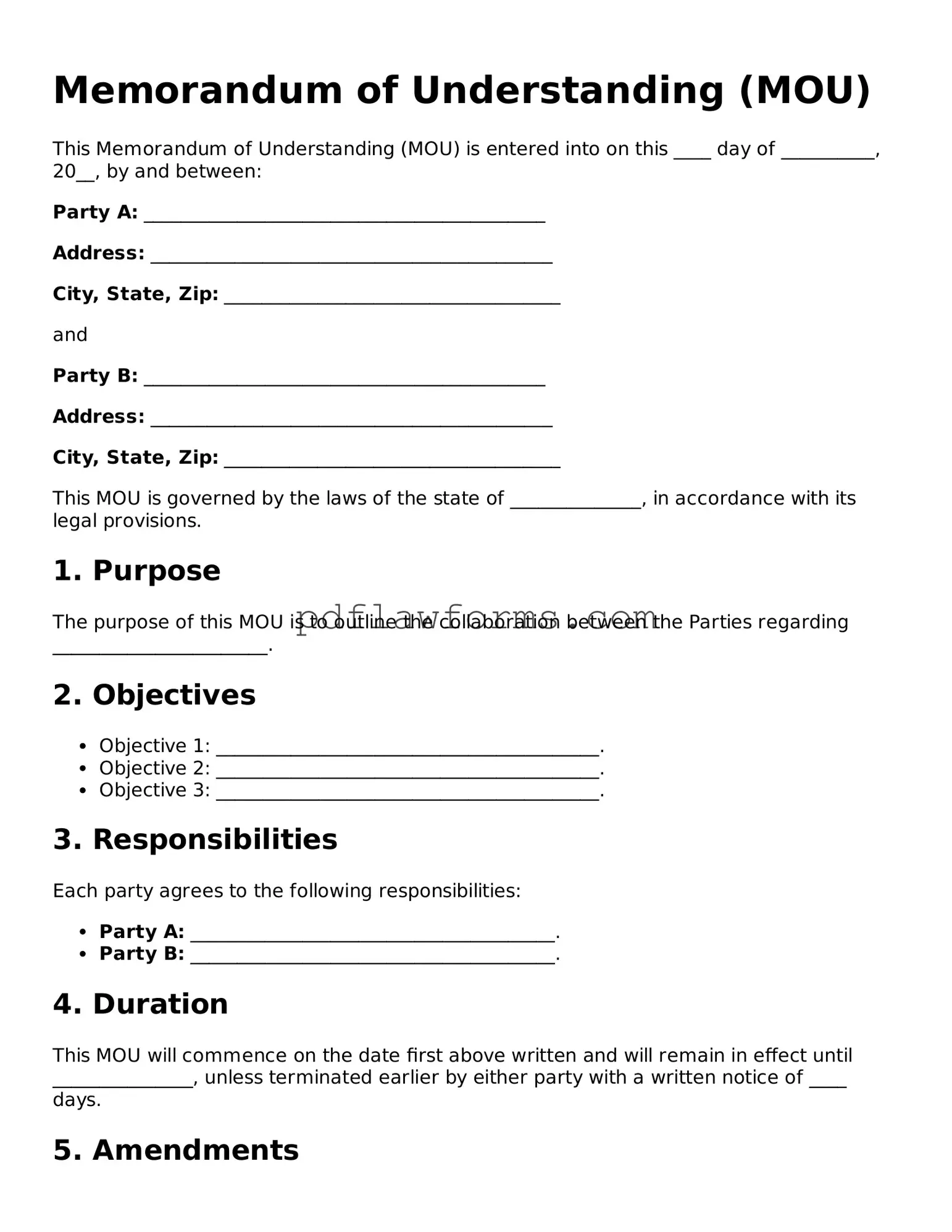In the world of agreements and partnerships, the Memorandum of Understanding (MOU) serves as a vital tool for fostering collaboration and outlining intentions between parties. This informal yet powerful document lays the groundwork for future agreements by clearly stating the objectives, roles, and responsibilities of each party involved. An MOU typically includes key elements such as the purpose of the collaboration, the scope of work, timelines, and any resources that will be shared. While it does not carry the same legal weight as a contract, it plays a crucial role in setting expectations and ensuring all parties are on the same page. By establishing a mutual understanding, an MOU can pave the way for more formal agreements down the line, helping to prevent misunderstandings and disputes. Whether used in business partnerships, nonprofit collaborations, or governmental agreements, the MOU is an essential document that reflects a commitment to working together toward common goals.
